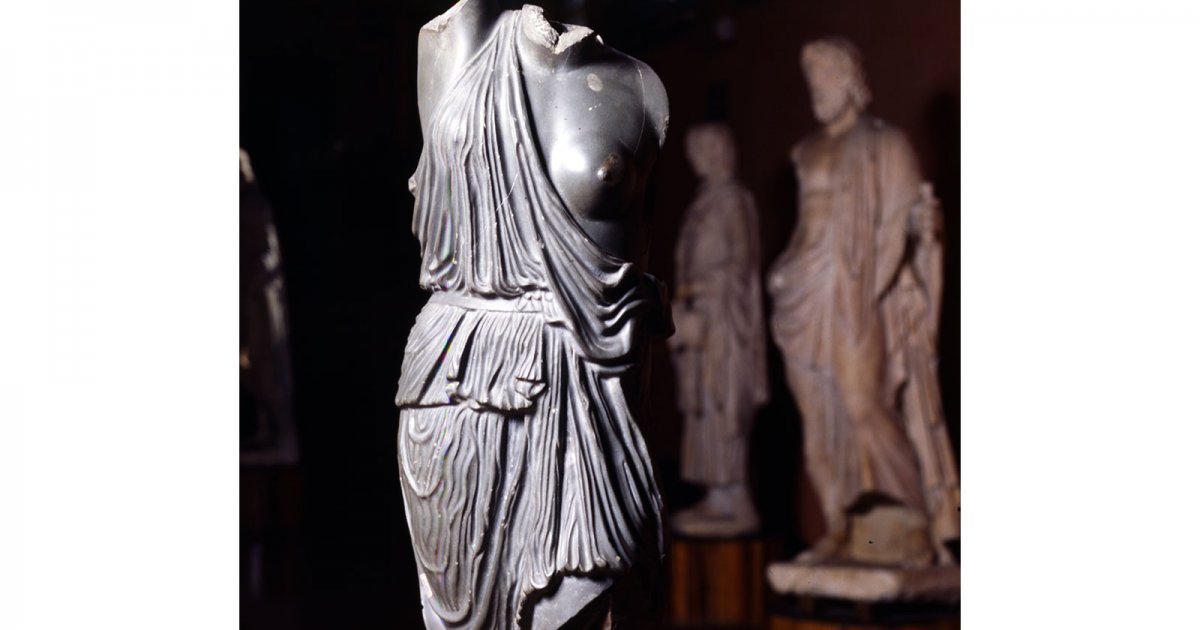ARCHAEOLOGICAL MUSEUM, Classic Antiquity Interior
 Language: English / USA
Language: English / USA
Now you are inside the Museum of Antiquities. Its historic headquarters are inside the "Orangerie", which is the greenhouse of the Royal Gardens. Enter on the ground floor and you'll be welcomed into a bright room dedicated to classical sculpture, with Roman copies of Greek masterpiece statues, including Phidias' Amazon, Polycletus' Diadumenos, and the statue of Eros that has been attributed to Praxiteles. There are several examples of official Roman statues here, like a marble throne from Luni, Tuscany and a torso in imperial porphyry.
Shortly after you'll enter a hall with Roman works, including three statues of figures in armor that were found in the excavations of Susa, a Piedmont town situated along the road of the Alps that was important in Roman times as a transit point to Gaul.
You should definitely note the refined mosaic floor depicting the mythical poet Orpheus taming the wild beasts while playing the zither. The mosaic is from Cagliari, and is part of the antiquities sent to Turin from the territories that were part of the Savoy's Kingdom, such as Sardinia.
On the first floor, in addition to the prehistoric and Etruscan collections, you can admire a significant collection of ceramic vessels of Italian and especially Greek production. A particularly valuable object is a specially shaped Greek vase with a bulb-shaped body over a tall, narrow foot: it's called a psykter, and was used to chill wine. This one is attributed to a famous potter of ancient times named Eutymides.
But the highlight of the classical antiquities is the so-called Papyrus of Artemidorus, a rare written artifact with Greek texts and illustrations, which according to scholars dates back to the first century after Christ. The text contains parts of a geographical treatise along with a map of the Iberian Peninsula, and is probably the most famous manuscript of antiquity thanks to the controversy over its authenticity. Physical and chemical findings have confirmed that the material actually dates back to the years between 15 and 85 AD, but some scholars are convinced all the same that the text and illustrations are the work of a skilled Greek forger from the 1800s. The mystery is yet to be solved!
FUN FACT: without picking sides about its authenticity, guess where the so-called "Papyrus of Artemidorus" was found? Amid a pile of macerated papyrus that filled the mouth of an embalmed crocodile! Unbelievable, isn't it?



